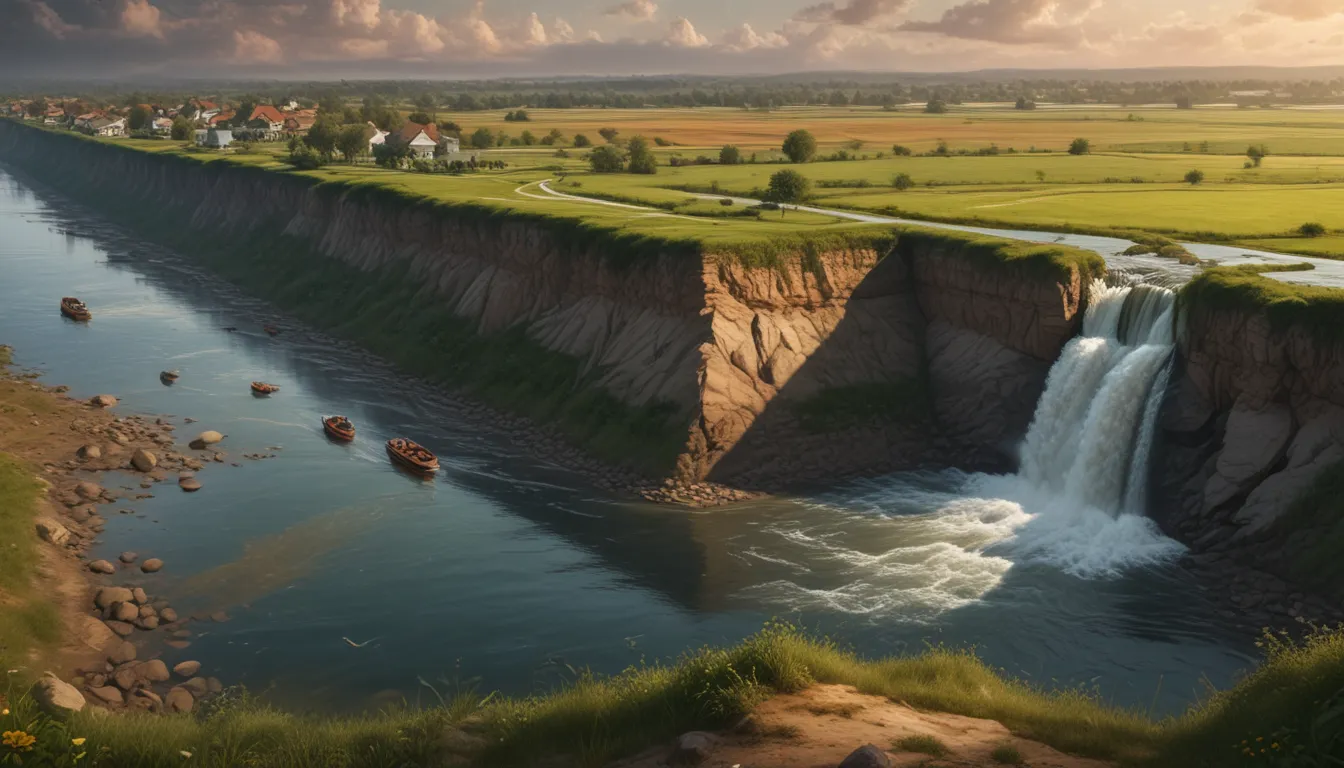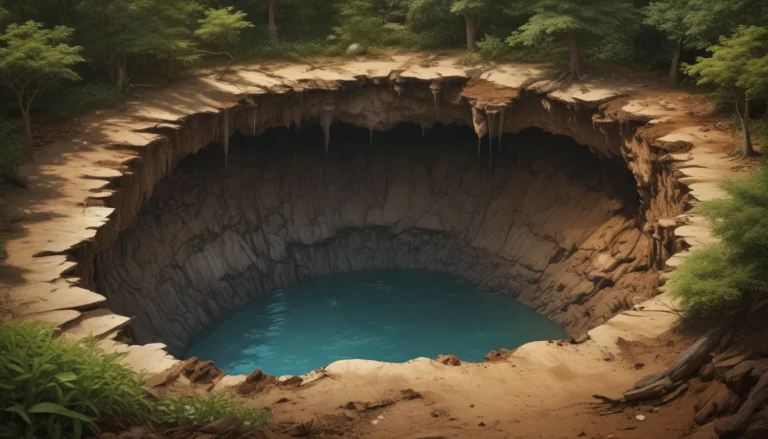A Note About Images: The images used in our articles are for illustration purposes only and may not exactly match the content. They are meant to engage readers, but the text should be relied upon for accurate information.
Levees, also known as river embankments, are not just ordinary structures; they are fascinating engineering marvels that have been a part of civilizations for thousands of years. These impressive barriers play a crucial role in managing the flow of water in rivers, safeguarding communities against flooding, and reducing the risk of damage to surrounding areas. While their primary function is practical, levees also boast a rich history and a plethora of intriguing facts waiting to be uncovered.
In this comprehensive guide, we will take a deep dive into the world of levees, shedding light on ten astounding facts that showcase the significance and awe-inspiring nature of these vital river management systems. From the construction techniques to their environmental impact, there is so much to learn and appreciate about these extraordinary structures. So, fasten your seatbelts and get ready to embark on a thrilling journey through the fascinating realm of levees!
Discovering the Legacy of Levees:
Levees: An Ancient Flood Barrier
- Levees are man-made embankments or walls constructed along rivers or water bodies to prevent flooding.
- These structures are typically made from compacted soil, sand, rocks, or concrete.
- The concept of building levees dates back to ancient civilizations such as the Egyptians and Mesopotamians who recognized the need to control the flow of water to protect their lands from floods.
The Global Presence of Levees
- Levees are not confined to specific regions or countries; they are constructed worldwide to safeguard areas prone to flooding.
- They are found in coastal regions, river valleys, and low-lying areas, showcasing their universal importance in flood management.
The Role of Levees in Water Resource Management
- Apart from flood protection, levees play a crucial role in managing water resources.
- They help regulate the flow of water, maintain river navigation channels, and provide a water supply for irrigation purposes.
Unveiling the Intricacies of Levees:
Maintaining the Integrity of Levees
- Ensuring the structural integrity of levees is essential for their effectiveness in flood control.
- Regular maintenance involves monitoring, vegetation removal, erosion repairs, and addressing breaches caused by natural forces or human activities.
Understanding the Risks of Levee Failure
- While levees are designed to withstand water forces, they can fail under extreme flood conditions.
- Factors like overloading, improper construction, or inadequate maintenance can lead to breaches or failures.
The Ecological Impact of Levees
- Building levees can disrupt ecosystems by altering the natural flow of rivers.
- Changes in water flow patterns can affect aquatic habitats, fish migration, and sediment transport, leading to long-term ecological consequences.
Embracing Innovation in Levee Management:
Enhancing Flood Protection with Floodplains
- Floodplains are low-lying areas adjacent to rivers that hold excess water during floods.
- Combining levees with well-managed floodplains can provide enhanced flood protection and minimize the impact on downstream communities.
Recognizing the Cultural Significance of Levees
- In many societies, levees hold cultural importance and symbolize the resilience of communities in flood-prone areas.
- They often play a role in local traditions, folklore, and celebrations, highlighting the deep connection between people and their environment.
Evolving with the Changing Times
- Due to climate changes, land use patterns, and increased urbanization, the design and construction of levees are constantly evolving.
- Engineers and scientists are exploring innovative techniques to improve levee effectiveness and sustainability.
Conclusion: Celebrating the Marvels of Levees
In conclusion, levees stand as remarkable structures that play a pivotal role in managing rivers and protecting communities from floods. While they offer essential protection, levees also present challenges such as degradation over time, necessitating continuous maintenance and upgrades. It’s crucial to consider alternative flood control measures and embrace innovative approaches to ensure the long-term effectiveness of levees in safeguarding communities and ecosystems.
Frequently Asked Questions:
- What is a river levee?
-
A river levee is a man-made embankment built along rivers to control water flow and prevent flooding.
-
How do levees work?
-
Levees work by confining the river within an embankment, raising water levels to reduce flood risks.
-
What materials are used to build levees?
-
Common materials include soil, clay, sand, gravel, and occasionally concrete and steel reinforcements.
-
Are levees always effective in preventing flooding?
-
While levees reduce flood risks, factors like heavy rainfall or inadequate maintenance can lead to failures.
-
Do levees have negative environmental impacts?
-
Levees can alter ecosystems, disrupt water flow, and impact wildlife habitats and water quality.
-
Can levees withstand all types of floods?
-
Levees are designed for specific flood levels, but extreme events may exceed their capacity, causing breaches.
-
Who maintains levees?
-
Responsibility varies, with government agencies, local municipalities, or levee districts often overseeing maintenance.
-
Can levees be relocated or removed?
-
In some cases, levees are relocated or removed to restore natural processes and improve ecological conditions.
-
Are there alternative flood control measures to levees?
-
Yes, options like floodplain zoning, flood-resistant building designs, and forecasting systems complement levees.
-
Are all rivers protected by levees?
- Not all rivers have levees, with decisions influenced by flood risk, population density, and available resources.
Exploring Beyond Levees:
Levees are just one aspect of flood control and water management. To dive deeper into the world of infrastructure and urban planning, explore how cities like Clifton, New Jersey, manage their infrastructure with our informative article on transportation and infrastructure facts. If you’re curious about nature’s flood defenses, don’t miss our piece on natural levees and their role in flood control. Join us in unraveling the complexities of water management and discover how humanity collaborates with nature to ensure the resilience and vitality of our cities.
Trust in Our Commitment to Excellence:
At our core, we are dedicated to delivering accurate, engaging content tailored to those hungry for knowledge. Each fact on our platform is contributed by real users like yourself, ensuring a diverse array of insights and information. Our diligent editors review each submission meticulously to uphold the highest standards of credibility and authenticity. Delve into the world of facts with confidence, knowing that our commitment to quality and innovation guides every step of your learning journey.






